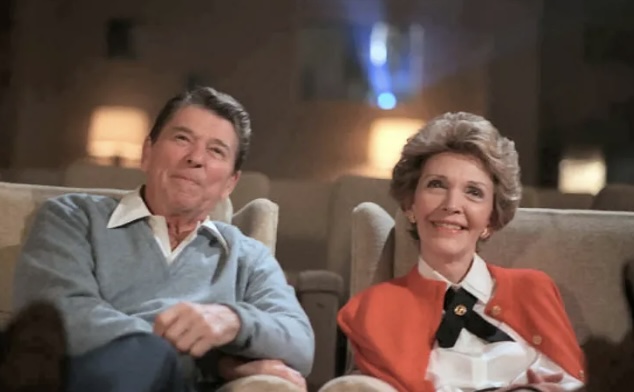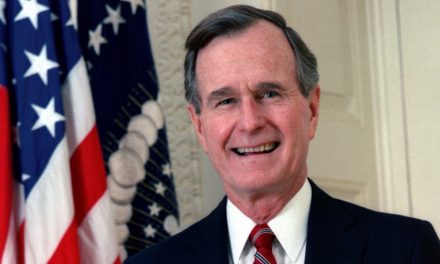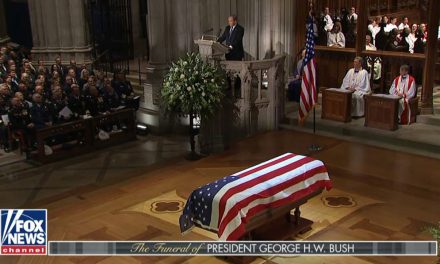Valentine’s Day origins are a bit muddied by a mixture of fact and fiction, but there’s no denying, as the old song from Broadway musical, “Carnival!” that “Love makes the world go ‘round.”
It certainly helped lead to the collapse of the Soviet Union and the fall of the Berlin Wall. How so?
The story starts at just past 9:30 in the morning on a summer day in 1935. Anne Francis Robbins, better known as “Nancy” by her friends, had just arrived in New York City’s Grand Central Station. The 14-year-old had traveled from Chicago to meet with her birthfather, Kenneth – and she was hoping he would agree to relinquish his parental rights so that she could be officially adopted by her stepfather, Dr. Loyal Davis.
Nancy’s mother, Edith Luckett, was the youngest of nine children and a woman always in search of her big break as an actress. Nancy’s birthfather, Kenneth, was a shoe salesman. Much less ambitious than Edith, he bounced from job to job, and agreed to relocate to New York so that Edith could find work on Broadway.
When Nancy was born on July 6, 1921, the couple’s relationship was already on the rocks. “I was told later that my [birth] father wasn’t at the hospital when I was born,” Nancy recalled.
As a single mother, Edith struggled to hold things together. Still pursuing an acting career, she decided to entrust Nancy with her sister in Maryland. A short stay wound up turning into six years.
Edith Robbins took acting parts as she could get them, eventually landing a role alongside Spencer Tracy in George M. Cohan’s play, “The Baby Cyclone.” It would be there where Edith met Loyal Davis, a young neurosurgeon who would turn her and Nancy’s world upside down.
After Edith married, the newlywed couple reclaimed Nancy, who was both excited and nervous to relocate to Chicago. The youngster quickly bonded with her new stepfather. “Loyal Davis,” she would later say, “was a man of integrity who exemplified old-fashioned values: That girls and boys should grow up to be ladies and gentlemen. That children should respect and obey their parents.”
Nancy appreciation for Dr. Davis grew exponentially, so much so that she announced she would like for him to adopt her. He was willing but such a process was contingent upon Nancy’s birthfather relinquishing his paternal rights. After the girl’s 1935 visit in New York, Kenneth agreed. Immediately following their meeting, Nancy made a beeline for the telegraph office.
“I didn’t have much experience with telegrams, but I knew they had to be brief,” Nancy remembered. “This one read, ‘Hi Dad.’”
Now Nancy “Davis,” the youngster thrived in her Chicago home. She studied drama at Smith College, landed a minor role on Broadway – and soon signed a seven-year contract with MGM studios. But there was a problem.
As it turned out, there was another actress named Nancy Davis – and this Nancy Davis was suspected of being a communist sympathizer. What was she to do?
A friend in the business recommended she meet with Ronald Reagan, then the president of the Screen Actors Guild. In his role, Reagan would be in a position to help her clear up the confusion. He did. That fateful meeting would, of course, lead to a storied fifty-two-year marriage taking the Reagans to the heights of worldly power and influence.
Ronald Reagan’s two terms as governor of California and two terms as president of the United States provided Nancy with two roles the first lady relished, but none more so than that of being Reagan’s wife. “My life didn’t begin until I met Ronnie,” she once said.
The late Michael Deaver, a longtime aid to the Reagans, once stated, “Without Nancy, there would have been no Governor Reagan, no President Reagan.”
But without Loyal Davis, the adoptive father of Nancy, a man who arrived in Edith Robbins’s life at just the right moment, there also would never have been an innocent actress named Nancy Davis needing to speak with a fledgling actor named Ronald Reagan.
Committed romantic love accounts for many things in history, including all the pieces of the puzzle that would one day lead to the ascent of Ronald Reagan, whose consequential presidency helped shape and transform not only America, but also the world.
Photo Credit: Ronald Reagan Presidential Museum






